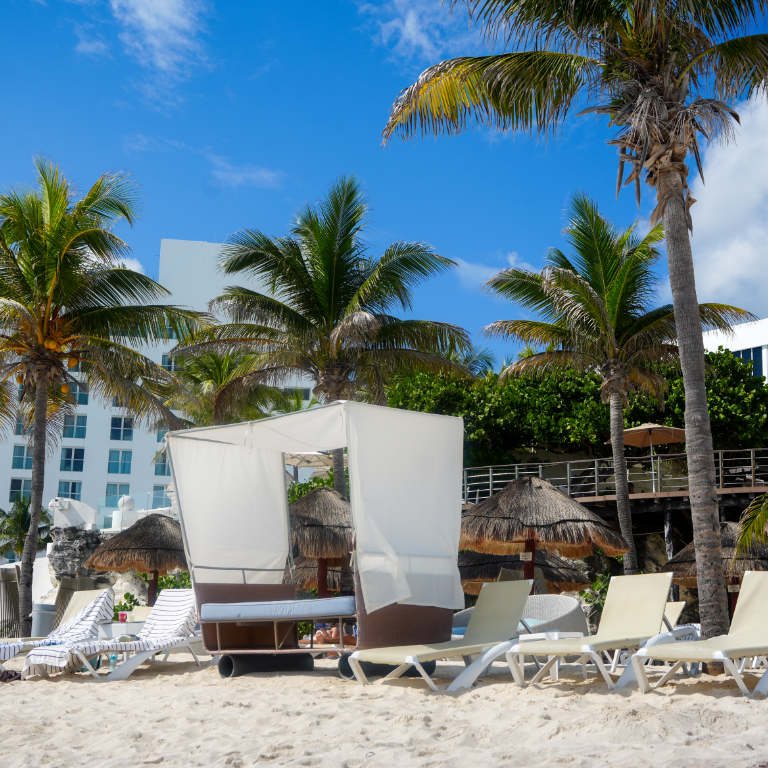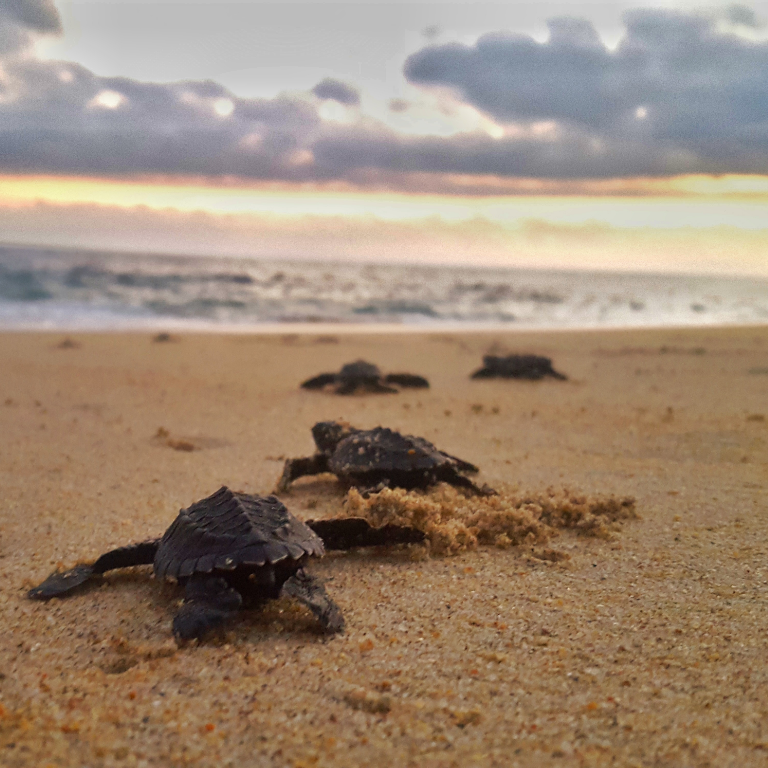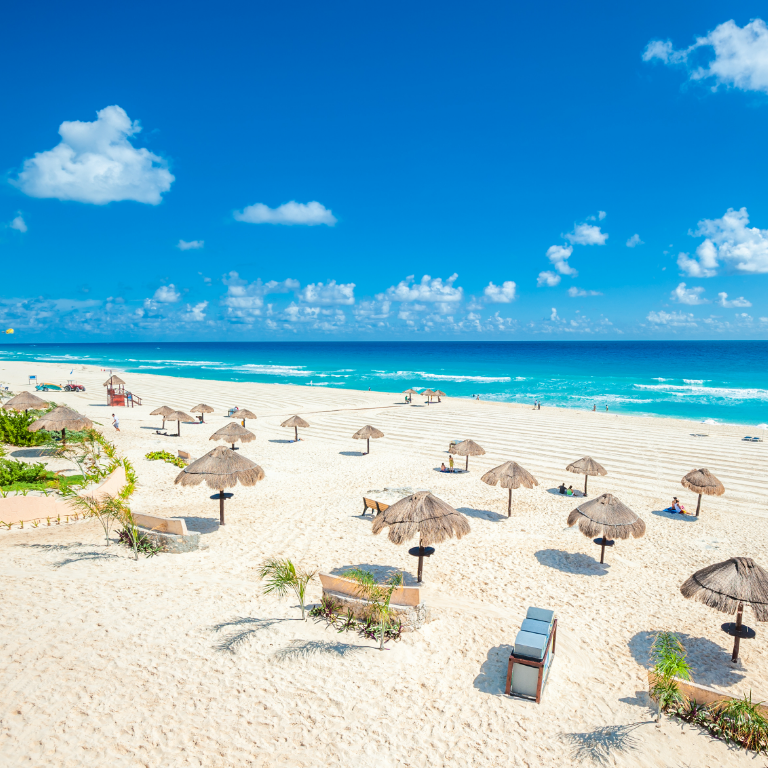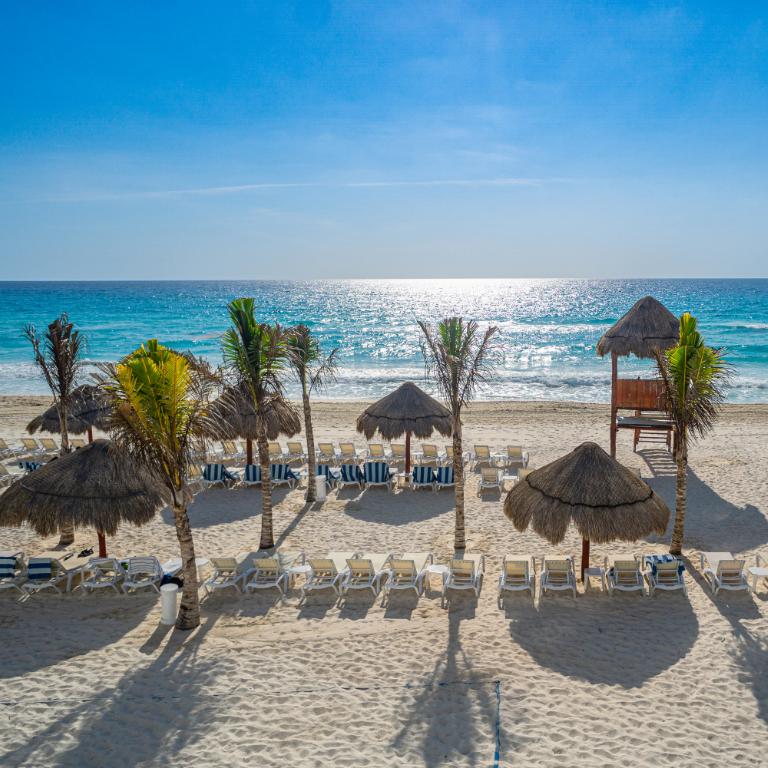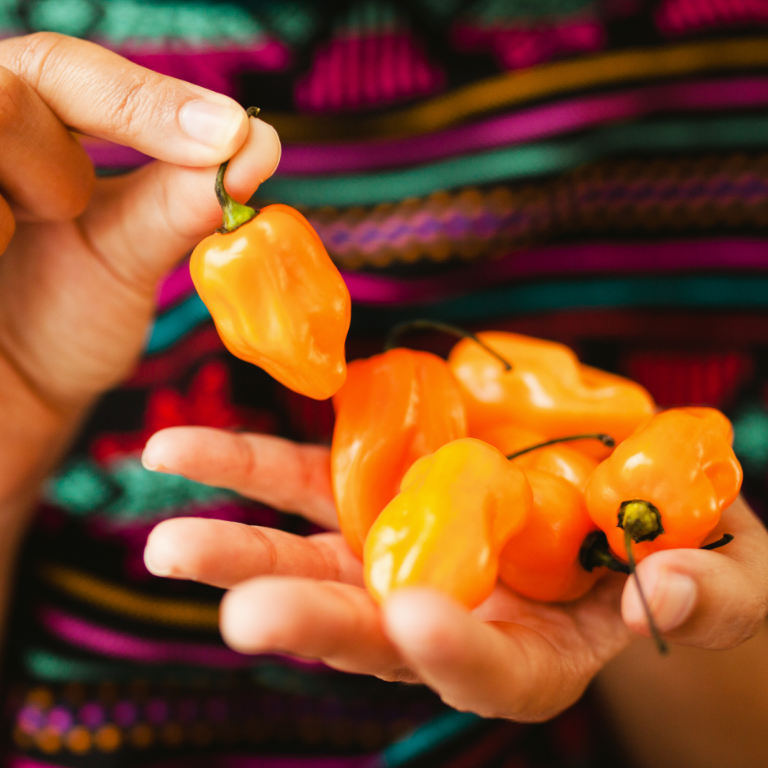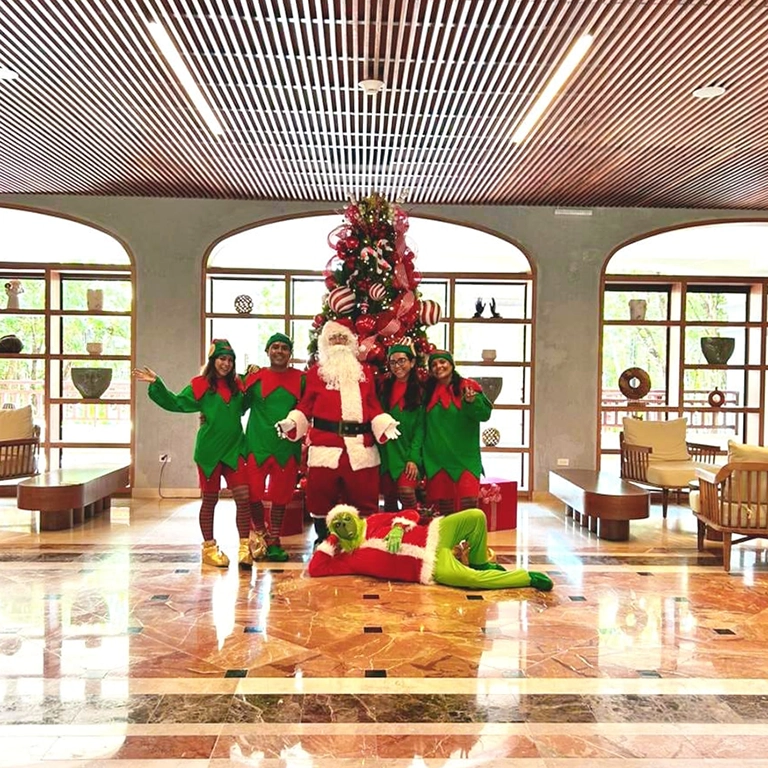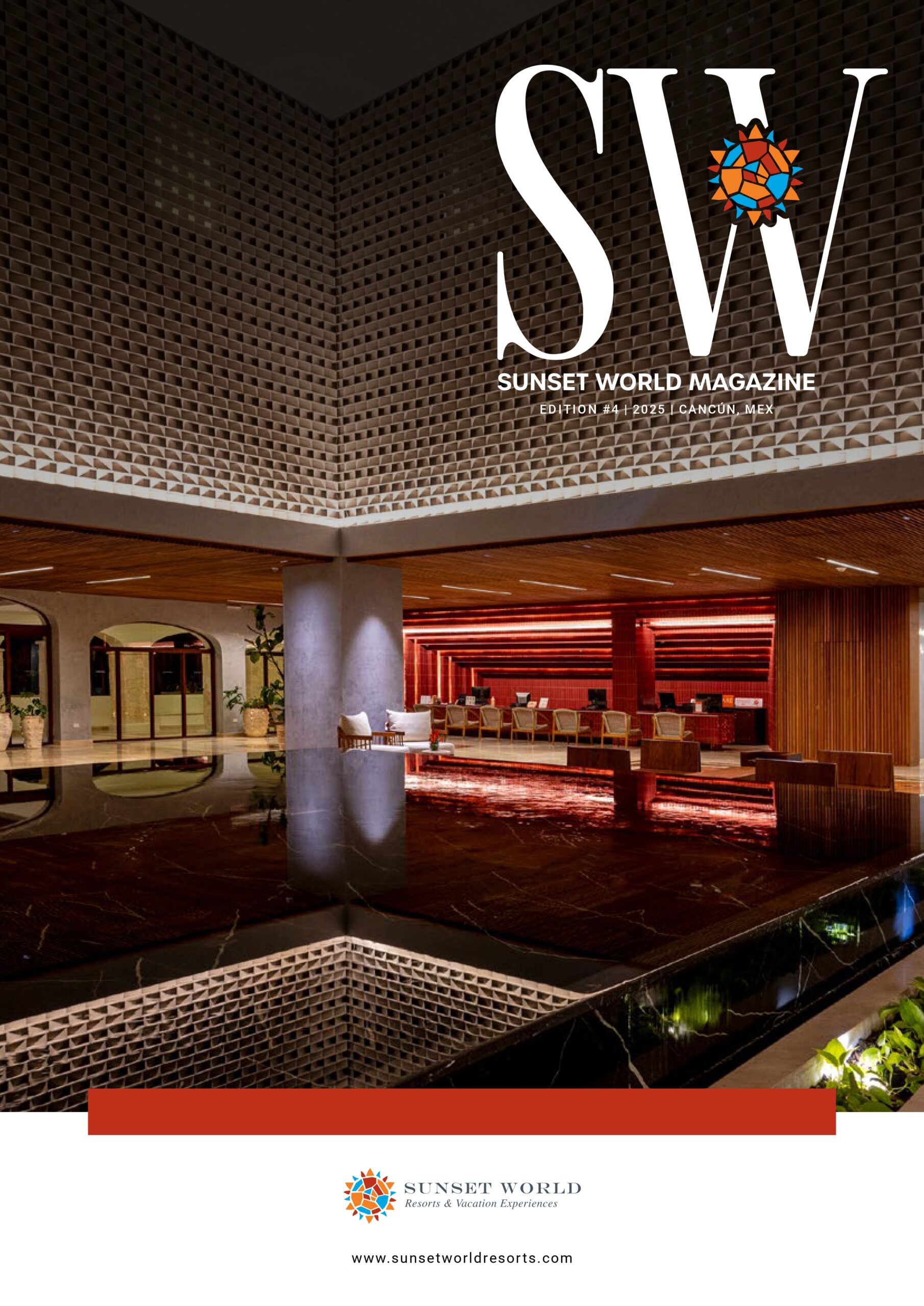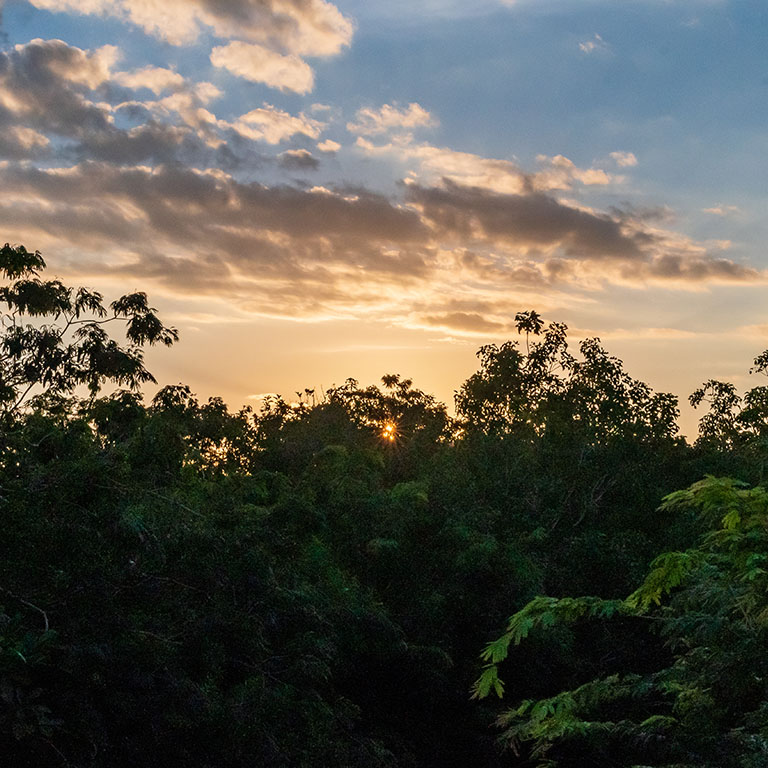
Sustainability and Conservation
All living organisms, including humans, depend on biological diversity for our survival and wellbeing. This allows us to obtain the means to survive such as food, oxygen, clean water, raw materials and shelter. That is why it is essential that cities preserve parks and green areas as “green lungs” within them to maintain a balance between human needs and local ecosystems as much as possible. This means having a natural area within reach that provides health, recreation and contact with nature.
Kabah Ecological Park
Kabah Ecological Park was inaugurated on November 10, 1995 and is the first protected natural area decreed by the Government of the State of Quintana Roo. It was created in response to the urgent need to preserve a large area as a green lung in the face of the vertiginous growth of Cancun.
Kabah Ecological Park is a large green triangle that covers approximately 102 acres and is delimited by Kabah avenue, for which it is named, Nichupté avenue and Del Bosque avenue in the center of Cancun.
Although it was not designed as a zoo, deer, coatis, badgers, squirrels and various species of birds from the region live within the park. In addition, there is also a waterhole where turtles, lizards and ducks live.
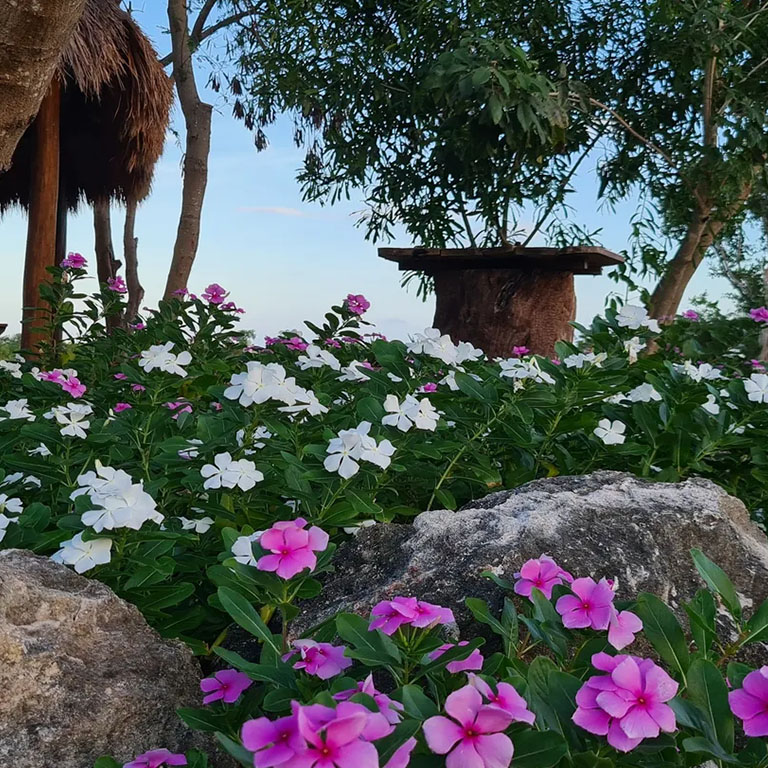
Park Areas
Areas for sports and other activities: There is a circuit of more than 1,100 meters with markers every 100 meters so that athletes can measure distance and resistance when running, jogging or walking. It also has exercise equipment and a palapa where yoga, zumba and meditation sessions are held, among others.
Family living areas: There are areas with children’s games, rustic chairs to rest and even organize a small picnic.
Casa Maya Museum: It was the first house built on the beaches of Cancun in 1969 by the Lima family to explore the island. From 1970 to 1992 it housed the FONATUR offices and in 1993 it was moved, piece by piece, to the place where it is now to serve as a museum of the history of Cancún. Its inauguration took place on May 1, 1998 and there you can find photographs and objects related to the founding and development of Cancún.
“Ombligo Verde” Ecological Reserve
Before being an ecological reserve, the “Ombligo Verde” (or Green Navel) was a forgotten vacant lot among the developed neighborhoods of the founding area of Cancún. In 2009, the Benito Juárez municipalty mayor back then launched a project to build a new municipal palace
there, an intention that environmental groups strongly opposed, achieving not only the cancellation of the urbanization project, but also turning it into an ecological one, resulting in the “Ombligo Verde” Ecological Reserve foundation in 2012.
The reserve covers 36 acres, is located between #33 and #34 neighborhoods and is home to native medium-sized jungle vegetation and some species of reptiles and mammals.
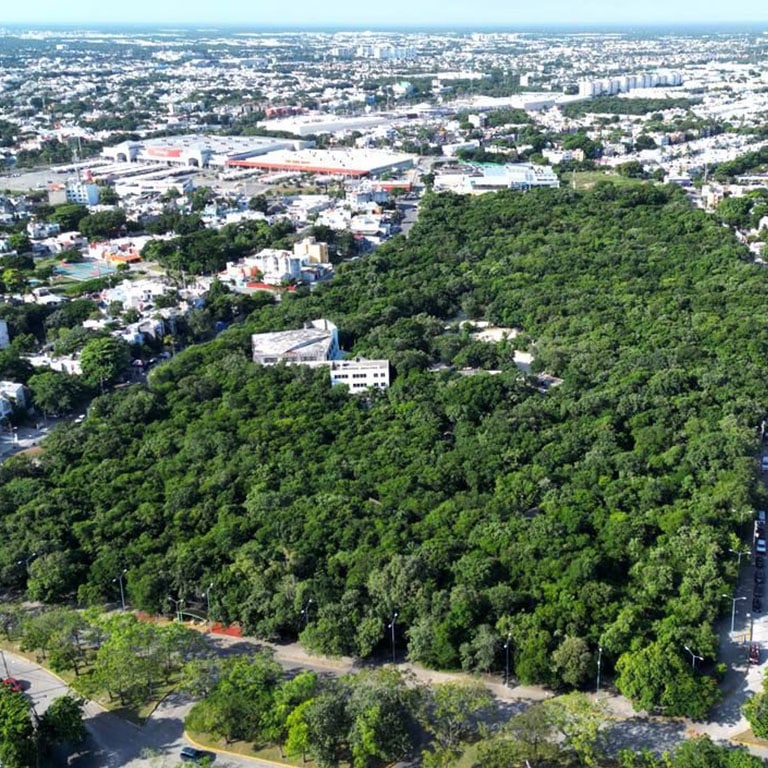
Park Areas
Areas for sports and other activities: The Ombligo Verde Ecological Reserve has paths for walking or running, spaces equipped for exercise and others for family coexistence with games for children.
Cancún Cathedral: It is the headquarters of the Diocese of Cancún-Chetumal that moved from Chetumal in 1998. They began to build it in 2002 and in 2022 they began remodeling works to finish it.
Cancun Park
In the 1970’s, the area that is now Cancun Park was a sascabera (gravel pit), that is, an area from which limestone was extracted to build the foundations of the Cancun hotel zone. Starting in 1980, it served as the city’s landfill and in 2008 it was integrated into the Nichupté Mangrove Flora and Fauna Protection Area. Construction of the park began in 2017 and opened in 2023.
In its first stage, Cancún Park has 336 acres that house areas of mangroves and low jungle. The fauna that inhabits it includes frogs, iguanas, snakes, coatis, cereques, deer, foxes, armadillos and anteaters, among other animals.
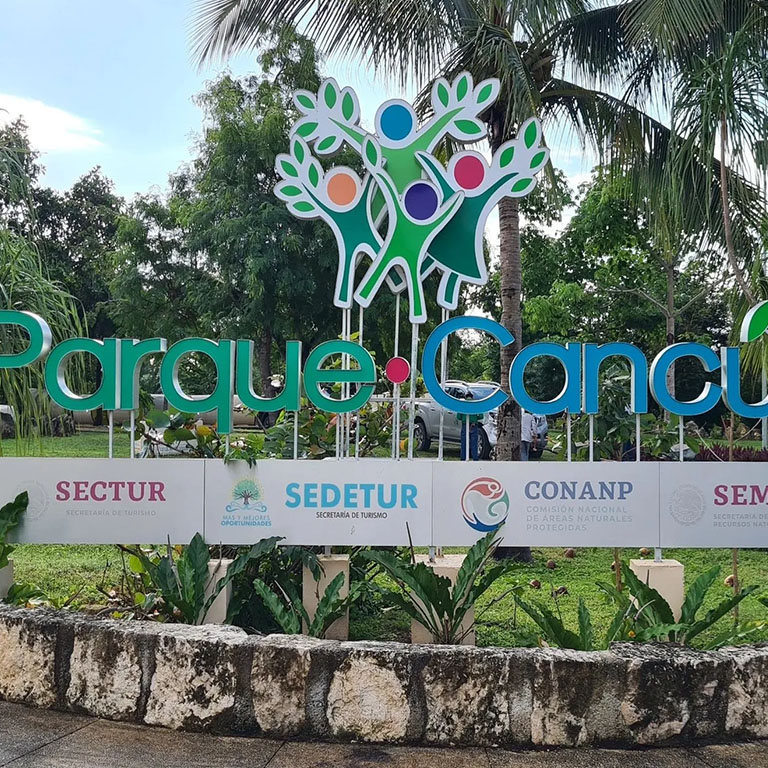
Park Areas
Areas for sports and other activities: There is a 1,600-meter circuit for cycling, a two-kilometer circuit for walking or running, and a skate park. There are also play areas for children and picnic areas.
There are 12 thematic gardens: the one of evolution, the one of meditation, the one of the planetarium, the sculptural one, the one of the time capsule, the garden on wheels, the one of the human library, the one of the visionary rocks, the one of the rocks to the sky, the aluxes aluxes (little mythical Mayan creatures) and chess garden, as well as the park’s gazebo and a rustic auditorium.
